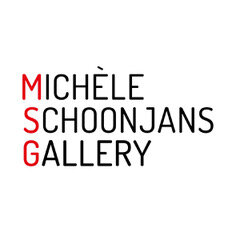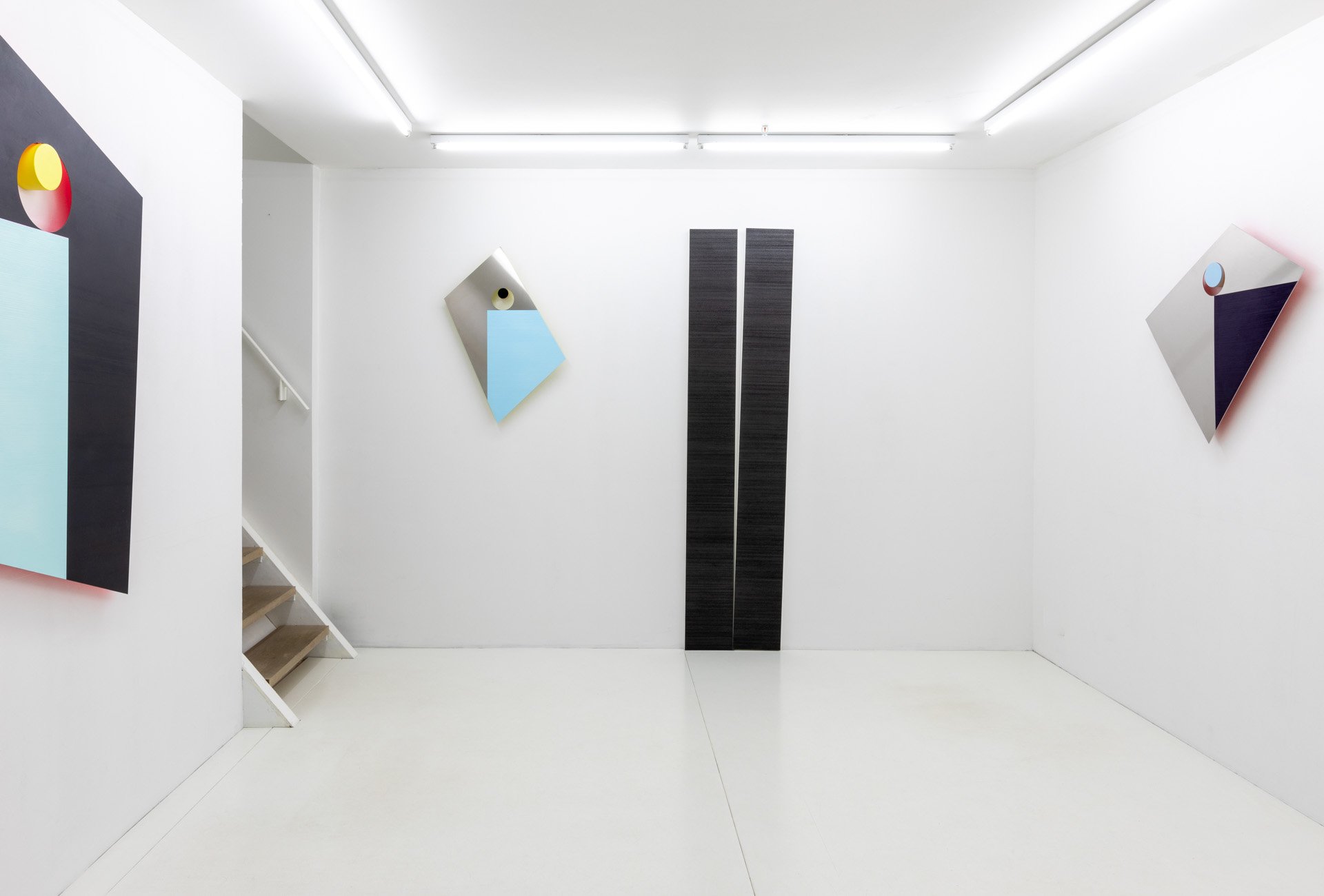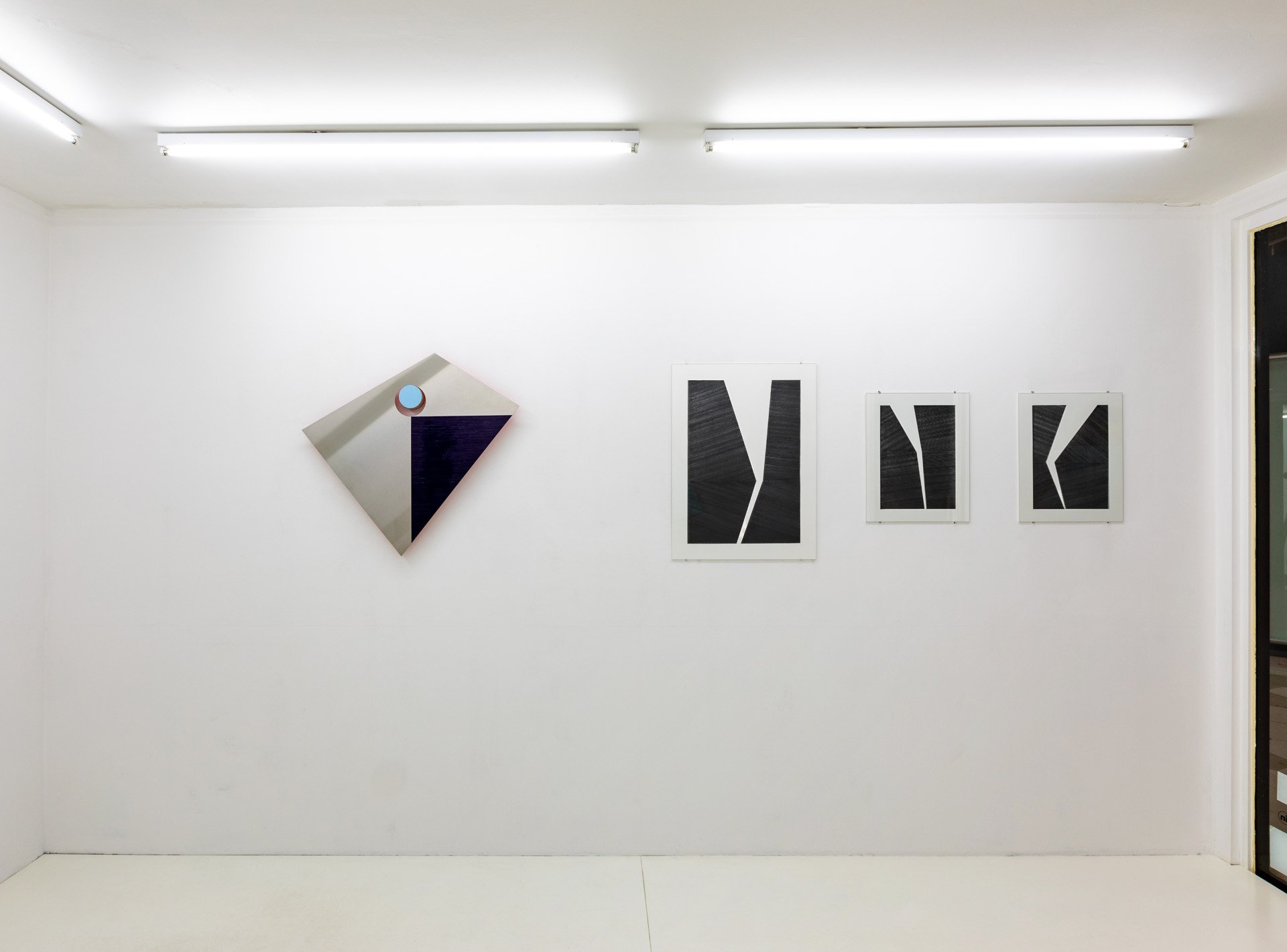Mathieu Bonardet - Equal Area II
Tom Henderson - Plinth N°11
Two virtuoso artists of instability.
For Mathieu Bonardet, the asceticism of black and white, the tangible material of graphite laid down on the surface of the paper, over and over. For Tom Henderson, the bouncing of colours, the brilliance of metal, and a curious little movement that reminds us that art above all is part of life. For both, balance, and imbalance, sometimes insignificant, but always a palpable thickness of form with strict geometries that are gently evolving. For both artists, the importance of shadows playing withing the volumes make us question our reading of the work as small spaces can suddenly appear strangely large from a distance. It is a question of perception, of course, and of perspective, of lighting and distance; if light was not given to us, they would no doubt naturally find its reflection!
Since graduating from the Beaux-Arts de Paris in 2013, Mathieu Bonardet has been developing a rigorous body of work, or as he himself puts it, a reduction, through the unique use of graphite, which has become a tool that extends his hand and sometimes even his entire body, and in the repetition of the line that tirelessly covers the white of the paper. There is no other effect, nor any hidden variant other than this energy labouring to compose sheet after sheet of shapes that seem to blossom in space, to materialise volume and act as a contrast to the whites that make up our contemporary interiors. The sculpture is also not far different, the balance of the object, as it is arranged, goes beyond the traditional notion of the support, and recalls the relationship between the plane and surface through the material and induced movement. The metallic splinters that occur from the application of graphite sometimes contrast with the matte finish obtained by sanding, reinforcing the impression of strength given off by these sheets that have become almost blades, black and bottomless mirrors raised before us like possible accesses to an unknown metaverse or landscape.
Tom Henderson, an English artist who has lived in the South of France for over ten years, also likes to explore a mixed language that blends painting and sculpture, through a diversity of materials. The wall works presented here use various sheet metals, oil paint and cast acrylic to create astonishing structures or flat sculptures. In the Arclight series, for example, the lines and coloured surfaces seem to dissolve within the opacity of the support, literally melting into the material in an attempt to absorb the viewer's gaze and make the very thickness of the works fluid and the picture plane disappear. The Plinths, without being truly mobile, are astonishing in their spatiality and their capacity to transform themselves according to the point of view from which they are approached. They are curious objects that are difficult to identify, that seem, in spite of their rather wise forms, to always want to detach themselves from their support, to agitate, to distort themselves in order to appear to us in new guises. And it is in the very action of the spectator, in his movement, that the true nature of these seemingly silent paintings is revealed.
A theatre of illusions and metamorphoses, the work of these two researchers and experimenters with matter, intersect and complement each other, both in their formal obsession with quadrilateral forms and in their relationship with the notion of balance and tilting, right up to the precise moment of installing their works. Duettists of the line, or one could even say acrobats of the line, the dialogue they initiate here opens the doors to a new world, a universe where drawing merges with sculpture, and it doesn't matter what the spectrum of colours or the depth of the black is, as long as we feel intoxicated by it!











